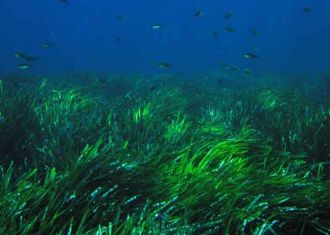 |
This summarizes some interesting, ongoing work on seagrasses and coastal carbon that is similar to what our group is doing in the Mid-Atlantic.
Eric Swenson, Editor
Brad Warren, Publisher
Research exploring how seagrasses in Washington, Oregon, and California bays and estuaries affect carbonate chemistry are due to start this spring and summer. The principal investigators are George Waldbusser of Oregon State University, who will focus on Netarts Bay; Jennifer Ruesink of the University of Washington, working in collaboration with the Washington Department of Natural Resources at several sites; and Tessa Hill, University of California, Davis, studying Bodega and Tomales Bays. Sea Grant is funding the California and Oregon research.
The three will be using different instrumentation, techniques, and measuring systems in a variety of venues, looking to identify habitats and conditions with the greatest potential for local reduction of carbon dioxide dissolved in water. Collectively, they will shed light on how fast seagrasses can draw down carbon dioxide through their photosynthesis, whether this carbon is sequestered longer term, and therefore the potential for primary producers to improve water conditions for sensitive shell-forming organisms.
Ruesink notes that some seagrass habitats may be net emitters of CO2 by trapping organic material that decomposes, releasing the gas. Similarly Waldbusser will be comparing native eel grass and Japanese eel grass habitats as he tries to understand the “carbon budget” of Netarts Bay. The scientists will make their findings known to policymakers, stakeholders, and the public in late 2015 to enable comparisons at broad geographic scales from a variety of estuaries.
Read more here.
Leave a Reply